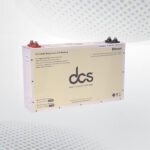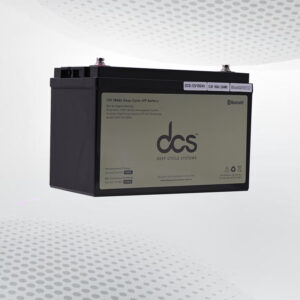The correct Best Motorhome Battery is crucial when powering your adventures on the open road. A lithium-ion battery for motorhome use is increasingly becoming the preferred choice among avid travellers and RV enthusiasts. Offering a combination of efficiency, longevity, and reliability, lithium batteries provide a modern solution to your energy needs. This post will explore the best motorhome batteries on the market and why lithium-ion batteries stand out as the best option.
Another critical advantage is the speed at which lithium-ion batteries recharge. They can be replenished up to four times faster than their lead-acid counterparts. This rapid charging capability reduces downtime and more time spent enjoying your travels. Coupled with the ability to discharge much lower without compromising the battery’s integrity, lithium-ion batteries are exceptionally well-suited for extended trips and off-grid adventures.
Advantages of Lithium Battery Motorhome
Lithium Battery Motorhome systems are revolutionising the way motorhome owners manage their power needs. Some key advantages make them stand out:
Extended Lifespan
Lithium-ion batteries are designed to last significantly longer than traditional options. Many can provide up to ten years of reliable service, reducing the need for frequent replacements.
Higher Efficiency
Operating at approximately 95% efficiency, these batteries ensure that more stored energy is usable. This translates to longer periods of power availability, which is ideal for extended trips.
Lightweight and Compact
One of the most noticeable benefits is the reduced weight and size. Lithium-ion batteries are much lighter and more compact, freeing up valuable space and making installation easier.
Rapid Charging
These batteries can be recharged up to four times faster than lead-acid alternatives. Faster charging means less downtime and more time to enjoy your travels.
Low Maintenance
Lithium-ion batteries are virtually maintenance-free, unlike lead-acid batteries, requiring regular maintenance. This makes them ideal for motorhome owners who prefer a hassle-free power solution.
Improved Discharge
Lithium-ion batteries can be discharged much lower without damaging the battery, offering greater flexibility and reliability during off-grid adventures.
Comparing Lithium Ion Batteries to Traditional Lead-Acid Batteries
Several factors highlight the superior performance of lithium technology compared to traditional lead-acid batteries. One of the most noticeable differences is in weight and size. Lithium-ion batteries are significantly lighter and more compact, maximising storage space and ease of handling in your motorhome.
Lithium-ion batteries’ upfront cost is higher than lead-acid batteries, but their longer lifespan and greater efficiency offset this investment. While lead-acid batteries may need replacing every few years, lithium-ion batteries can last up to ten years or more with proper care. This extended lifespan means fewer replacements and cost savings over time.
Another key advantage of lithium-ion batteries is their efficiency. Operating at approximately 95% efficiency, they outperform lead-acid batteries, which typically operate at around 80%. This higher efficiency means that more of the stored energy is usable, allowing for longer periods of power availability, which is particularly beneficial for extended trips or off-grid adventures.
Lithium-ion batteries also boast faster charging times. They can be charged up to four times faster than lead-acid batteries, which mean less downtime waiting for your battery to recharge and more time enjoying your journey. Lithium-ion batteries can be discharged to a much lower level without damaging the battery, unlike lead-acid batteries, which can suffer from reduced capacity if frequently discharged below 50%.
In summary, lithium-ion batteries are lighter in weight, have a longer lifespan, are more efficient, and have faster charging times, making them a more attractive and practical option for motorhome owners.
How to Choose the Right Lithium Battery For Motorhome
Choosing the right Lithium Battery For Motorhome involves several key considerations to ensure the best performance and value. Start by assessing your power needs; calculate the total wattage of the devices and appliances you plan to use. This will help determine the required battery capacity, often measured in ampere-hours (Ah). Next, evaluate the battery’s discharge rate and depth of discharge (DoD).
A higher DoD allows you to use more of the battery’s capacity without causing damage, providing greater flexibility for off-grid adventures. Check for built-in battery management systems (BMS) that protect against overcharging, overheating, and short-circuiting. Compatibility with your existing setup is crucial.
Ensure the battery fits within your motorhome’s designated space and can integrate with your current inverter and charger. Some lithium-ion batteries come with advanced features like Bluetooth connectivity, enabling you to monitor battery health and performance via a smartphone app. Lastly, consider the warranty and support offered by the manufacturer.
A longer warranty period indicates confidence in the battery’s longevity and reliability. Reputable brands also provide better customer support, which can be invaluable for troubleshooting and maintenance.
Installation Tips for Lithium Ion Battery Motorhome
Proper installation of Lithium Ion Battery Motorhome is key to ensuring optimal performance and safety. Begin by disconnecting any power sources to prevent electrical hazards. Carefully remove the old battery and thoroughly clean the compartment to ensure a good connection and prevent debris from interfering.
Next, position the new lithium-ion battery in the designated space, ensuring it is securely fastened to prevent movement while driving. Check that the battery is level and stable. Use appropriate cables and connectors that match the battery’s specifications, avoiding any makeshift solutions that could compromise safety.
Connect the battery terminals following the manufacturer’s instructions, typically starting with the positive terminal first. Ensure all connections are tight and free from corrosion. Some lithium-ion batteries come with integrated battery management systems (BMS) that should be connected according to the guidelines provided.
Suppose your lithium-ion battery has Bluetooth connectivity; set up the monitoring app on your smartphone to keep track of the battery’s health and performance. Lastly, double-check all connections and ensure the battery functions correctly before powering up your motorhome’s electrical systems.
Maintaining and Caring for Your Lithium Ion Battery
Proper maintenance and care of your lithium-ion battery can significantly extend its lifespan and ensure optimal performance. Start by keeping the battery clean and dry, avoiding exposure to moisture, which can cause corrosion.
Regularly inspect the battery terminals and connections for wear or damage, tightening any loose connections to maintain a stable power supply. Temperature control is crucial for lithium-ion batteries.
Avoid exposing the battery to extreme temperatures; store it in a cool, dry place when not in use and use thermal management systems during operation in hot climates. If your battery features a built-in Battery Management System (BMS), it will automatically regulate temperature and prevent overheating.
Monitor the battery’s state of charge and avoid letting it drop to deficient levels frequently. While lithium-ion batteries can handle deeper discharges compared to lead-acid batteries, maintaining a charge between 20% and 80% can help prolong its lifespan.
Use chargers specifically designed for lithium-ion batteries to ensure efficient and safe charging cycles. Additionally, periodic firmware updates from the manufacturer can enhance the battery’s performance and safety features. Always follow the manufacturer’s guidelines for maintenance and care to get the best out of your lithium-ion battery.
The Environmental Impact of Lithium Ion Batteries
The environmental impact of lithium-ion batteries is a nuanced topic, with both positive and negative aspects to consider. On the positive side, lithium-ion batteries offer a longer lifespan than traditional lead-acid batteries, translating to fewer replacements over time.
- This longevity means fewer batteries must be produced, thus conserving raw materials and reducing waste. In addition, the higher efficiency of lithium-ion batteries contributes to better energy utilisation, which can indirectly reduce the overall environmental footprint of your motorhome.
- However, the production of lithium-ion batteries is not without its challenges. The extraction of lithium, cobalt, and other rare earth metals in these batteries can have significant environmental consequences. Mining activities can destroy habitats, soil erosion, and water pollution.
- The extraction process is energy-intensive and can produce substantial greenhouse gas emissions. Efforts are being made to develop more sustainable mining practices and to find alternative materials, but these solutions are still in the early stages of implementation.
- Another concern is the disposal of lithium-ion batteries at the end of their lifecycle. While they last longer than lead-acid batteries, they must be disposed of eventually. Improper disposal can lead to environmental contamination, as these batteries contain hazardous materials that can leach into the soil and water.
- However, advancements in recycling technology are helping to mitigate this issue. Recycling facilities are increasingly able to recover valuable materials from used lithium-ion batteries, reducing the need for new raw materials and minimising environmental harm.
- Moreover, the growing popularity of lithium-ion batteries has spurred interest in second-life applications. After initial motorhome use, these batteries can often be repurposed for less demanding applications, such as energy storage in residential or commercial settings. This secondary use can further extend the batteries’ life, providing additional environmental benefits.
It’s also worth noting that the environmental impact of lithium-ion batteries should be considered in the broader context of their usage. For motorhome owners, switching to lithium-ion batteries can enable more efficient use of renewable energy sources like solar power. This can reduce reliance on fossil fuels and decrease the overall carbon footprint of your travels.
Conclusion
Opting for a Best Motorhome Battery is more than just a trend; it’s a strategic decision based on practicality and efficiency. These batteries offer a range of benefits that traditional lead-acid options can’t match. From their extended lifespan to their lightweight design, lithium-ion batteries are engineered to meet the unique demands of motorhome travel. Whether running appliances or lighting even more energy-intensive equipment like microwaves, a lithium-ion battery ensures consistent performance without worrying about depleting your power reserves.
FAQs
Q1: How do lithium-ion batteries perform in extreme weather conditions?
Lithium-ion batteries generally perform well in various temperatures, making them suitable for different climates and conditions. However, extreme cold can temporarily reduce the battery’s capacity and efficiency. Some lithium-ion batteries come with built-in heating elements or thermal management systems to mitigate this. The battery’s management system will work to prevent overheating in extremely hot conditions. Always check the specifications of your battery and consider additional protective measures if you plan to travel in extreme weather conditions.
Q2: Can I use my existing charger with a new Best Motorhome Battery?
While some existing chargers may be compatible with lithium-ion batteries, using a charger specifically designed for Best Motorhome Battery is generally rec-lithium-ion technology. Lithium-ion batteries have different charging requirements than lead-acid batteries, and using an incompatible charger can lead to inefficiency or damage. Always consult the battery manufacturer’s guidelines to ensure you use the appropriate charger for optimal performance and safety.
Q3: What are the initial costs of switching to a lithium-ion battery for my motorhome?
The upfront cost of lithium-ion batteries is higher than traditional lead-acid batteries, primarily due to their advanced technology and longer lifespan. However, this initial investment is offset by the reduced need for replacements and the higher efficiency over the battery’s life.
When considering the total cost of ownership—including fewer replacements, less maintenance, and enhanced energy efficiency—many motorhome owners find that the long-term savings justify the higher initial expense. Lithium-ion batteries’ superior performance and reliability add value to your overall motorhome experience, making the investment worthwhile.




